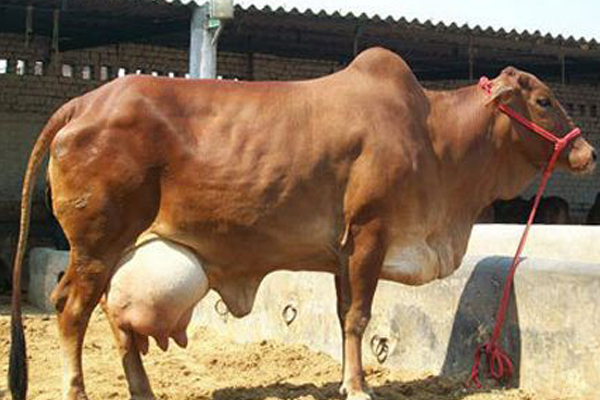
Sahiwal Cow: A Treasure of Agriculture
The Sahiwal cow, revered for its resilience, productivity, and gentle disposition, stands as a testament to the rich agricultural heritage of the Indian subcontinent. Originating from the Punjab region, particularly the district of Sahiwal in Pakistan, this breed has gained worldwide recognition for its remarkable attributes, making it a prized possession for farmers and dairy enthusiasts alike.
History and Origin:
The history of the Sahiwal cow traces back centuries, evolving in the fertile lands of the Punjab region. The breed derives its name from the Sahiwal district, where it was carefully developed through selective breeding for its adaptability to the local climate and its ability to thrive in harsh conditions. Sahiwal cattle are believed to have descended from the indigenous cattle of the region, which were crossed with exotic breeds like the Nellore and Rathi to enhance their characteristics.
Physical Characteristics:
Sahiwal cows are renowned for their distinctive appearance and sturdy build. They typically have a reddish-brown coat with white markings on the face, ears, and underbelly. Their medium to large size, strong limbs, and well-developed udders are indicative of their superior milking capabilities. The Sahiwal's docile temperament further adds to its appeal, making it easy to handle and manage, even for novice farmers.
Adaptability and Resilience:
One of the most remarkable traits of the Sahiwal cow is its adaptability to diverse environments and climates. Whether in the scorching heat of the Indian plains or the humid conditions of Southeast Asia, Sahiwal cattle demonstrate remarkable resilience and can thrive in a range of agricultural systems. Their ability to efficiently convert low-quality forage into high-quality milk and meat makes them invaluable assets for smallholder farmers and commercial dairy operations alike.
Milk Production and Quality:
Sahiwal cows are esteemed for their exceptional milk production, which rivals that of many exotic dairy breeds. Their milk is prized for its high fat content, protein richness, and superior taste, making it ideal for producing a variety of dairy products, including ghee, yogurt, and cheese. Furthermore, Sahiwal milk is renowned for its medicinal properties and is believed to offer numerous health benefits due to its nutrient-rich composition.
Economic Importance:
In addition to their role in milk production, Sahiwal cattle are highly valued for their meat quality. Known for its tenderness and succulence, Sahiwal beef is in high demand both domestically and internationally. Moreover, Sahiwal cows play a crucial role in sustainable agriculture, contributing to soil fertility through their manure and aiding in crop production through their use as draught animals.
Conservation Efforts:
Despite their significant contributions to agriculture, Sahiwal cattle face threats from crossbreeding with exotic dairy breeds and changing agricultural practices. Recognizing the importance of preserving this indigenous genetic resource, various governmental and non-governmental organizations have initiated conservation efforts aimed at promoting the purebred Sahiwal population and enhancing its genetic diversity.
Conclusion:
The Sahiwal cow stands as a symbol of resilience, productivity, and cultural heritage. Its adaptation to diverse environments, exceptional milk production, and valuable contributions to agriculture make it an indispensable asset for farmers worldwide. As efforts to conserve indigenous cattle breeds gain momentum, the Sahiwal cow remains a shining example of the rich genetic diversity that underpins sustainable agriculture and food security.

.png)

.png)
